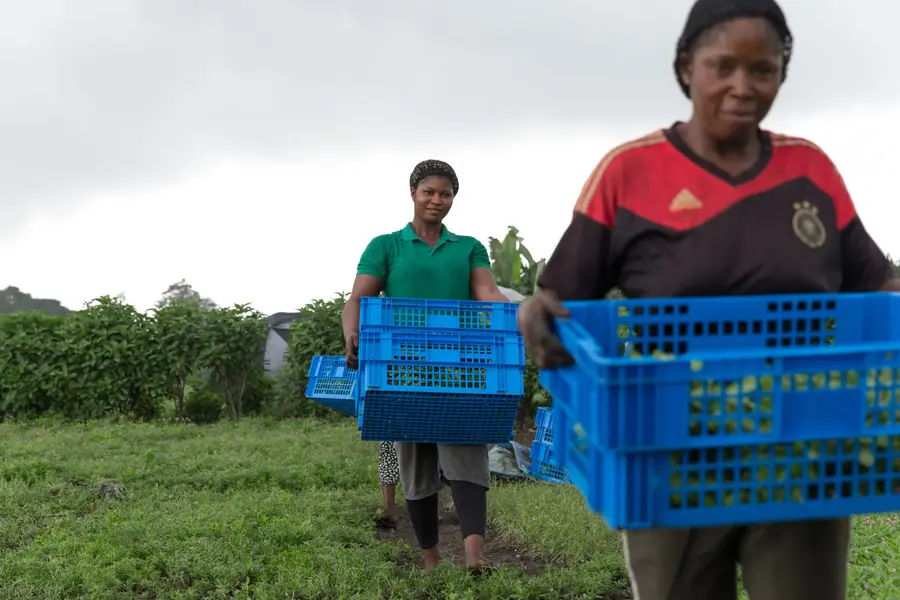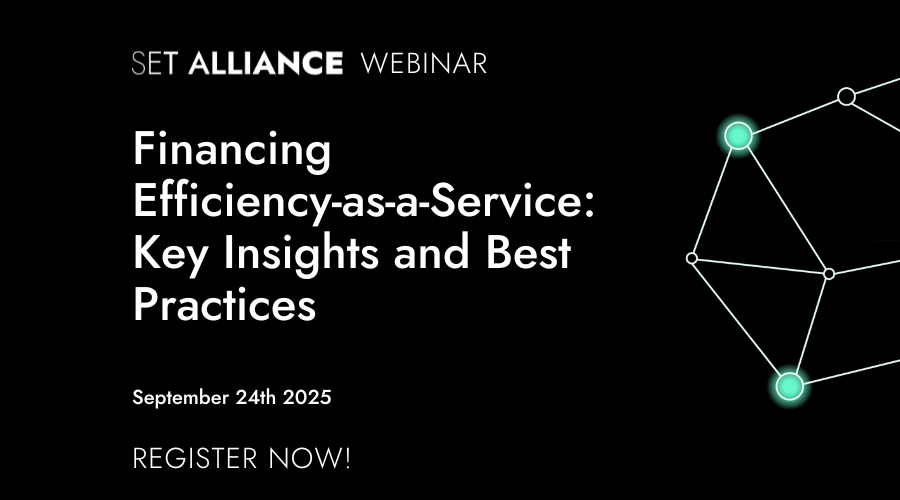What are the key advantages of digitalisation in Product-as-a-Service (PaaS) models for scaling energy efficiency and circularity? What challenges do organisations face when integrating digital servitisation? We invited top experts to discuss these crucial questions in our latest webinar.
Our recent webinar delved into the transformative potential of digitalisation in Product-as-a-Service (PaaS) models, focusing on how these technologies can enhance energy efficiency, promote the use of renewables, and drive circular economy practices. This innovative approach promises significant reductions in environmental impact while optimising resource use and operational efficiency.
Background
Digitalisation is transforming the way services are delivered and managed, offering new opportunities for efficiency and sustainability. Technologies like sensors, IoT (Internet of Things) and cloud computing allow companies to collect data on product performance and customer usage, holding a tremendous potential for improving the management of assets as well as customer relationships.
In that regard, digital tools can play a key role in as-a-service offerings of energy-efficiency appliances and renewable energy solutions. As a first example, they can be used to analyse energy usage patterns and design a system sized to the needs of the customer. Additionally, remotely tracking system performance and controlling operations empowers providers to offer truly proactive maintenance, identify potential issues and fix them before they become problems, and adjust energy systems based on real-time needs, therefore optimising energy use for maximum cost savings.
However, installing digital tools often comes with its own barriers as well. As shown by the survey ran during the webinar, many persons are either reluctant to change processes with digital tools, or also are repelled by the complexities of integrating digital tools and their high (or uncertain) costs.
As experts in the sector, our event’s panellists explored how digitalisation can unlock the feasibility of the servitisation model, recount their journey into implementing servitisation offerings, the challenges faced and solutions selected to overcome them. Dr. Parikshit Naik, Achint Varia and Olli Kuismanen respectively represented the Advanced Services Group (ASG), pioneering the research on servitisation; Tamturbo, a leading company offering Compressed Air-as-a-Service; and Industrility, which created an innovative after-sales digital platform greatly enhancing the long-term management of appliances for industrial companies.
Session Highlights
The Path to Servitisation: The session kicked off with a comprehensive overview of how digital tools are revolutionising PaaS, including key benefits and implementation strategies. Parikshit Naik, Commercial Director at the Advanced Services Group, introduced the Services Staircase, which breaks down the path to servitisation into incremental, progressive steps from basic services (provision of the product and spare parts), to intermediate services (repair, maintenance, and training services) and until advanced services (guaranteeing the outcomes of the product). The way to servitisation marks the shift from selling only a product (e.g. cooling system) to selling the outcomes of the product (e.g. cold air). Among the advanced services, three levels can be distinguished:
- Ensuring customer asset capability with a product outcome guarantee (e.g. guaranteeing uptime and availability of the cooling equipment)
- Ensuring customer process capability with a business processes guarantee (e.g. guaranteeing a certain level of performance or temperature)
- Ensuring customer platform capability (e.g. guaranteeing overall comfort at the client’s facility, beyond cooling but also including air quality for example).
Pariskhit stressed that before shifting to as-a-service models, it was key to rigorously assess whether it holds strategic benefits for the organisation, and most of all, if such offering would create added value for the client base. Defining the value proposition constitutes the very first step in the development of any servitisation business model. Once this is determined, the next step is to find out how to deliver this value to the client, which can be a logistical headache depending on the product offered. This is where digitalisation comes in: technologies such as sensors, the Internet of Things (IoT) and Artificial Intelligence, are changing how companies can monitor, collect data, and control their solutions efficiently and remotely.
Digital Tools for Servitisation
According to Achint Varia, Founder and Chief Revenue Officer at Industrility, digitising industrial systems is critical to maximising their added value for both clients and providers. Before advanced services, Achint believes it is key to digitising basic and intermediate services, which would greatly simplify the management of these assets and enable optimised revenue streams whether they are offered under an as-a-service business model or not.
Industrility, as a platform empowering technology providers to digitally and centrally manage their assets, represents a leading after-sales solution. The AI-powered digital twins of the physical systems, gathering and leveraging data from the users, the manufacturer and the service provider, allow to drastically optimise the operation and performance of the systems, maximising value creation and delivery across the lifetime of the equipment.
Tamturbo, a Digital Servitisation Business Case
An example of a successful digital servitisation offering comes from Tamturbo, an innovative and efficient compressed-air system manufacturer. Tamturbo, due to the complexity of the technology, the difficulties often faced to operate these machines, and the higher price its state-of-the-art solution represents compared to traditional systems, led the management to embrace the as-a-service model. Despite an equipment worth up to three times the cost of a conventional compressor, Tamturbo’s system’s greater efficiency yielded in some cases hundreds of thousands of euros per year from energy savings, hence representing a clearly lower cost of ownership in the long term. Therefore, Compressed Air-as-a-Service emerged as a win-win solution to tackle the upfront cost barrier, and capture residual value, such as the waste heat the compressors produce. Driven by performance, Tamturbo opted to guarantee the efficiency of the system: under its pay-per-use model, the price of the delivered cubic meter of air varies depending on the energy used to produce it. If more energy than normal was used, resulting in higher utility costs for the client, the price of this unit of air decreases. If efficiency was high and used lower amounts of energy, the cubic meter is then sold at a higher cost, hence incentivising the company to perform as well as possible.
Tamturbo uses its own digital tools, enabling real-time monitoring, and optimisation depending on environmental factors such as temperature and humidity, as well as aggregating usage data to provide predictive maintenance, enabling the company to anticipate issues before they cause a disruption of the service.
Event Attendance
The session welcomed people from various industries, with a high presence of manufacturers (35%), academia (17%) financiers (7%), and consultancies (7%). Diverse geographies were also represented, with a majority connecting from North America (41%) and Europe (17%) and Africa (8%)
Replay the event!
Featured Speakers:
- Parikshit Naik, Commercial Director at the Advanced Services Group Parikshit shared his expertise on driving service-led growth in industrial firms through advanced services and digitalisation. His insights into the strategic benefits and practical applications of digital tools were invaluable.
- Olli Kuismanen, Business Developer at Tamturbo Olli discussed Tamturbo’s journey towards digital servitisation, focusing on their “Touch-Free” and “Care-Free” compressed air services. He emphasised the sustainability and efficiency gains achievable through these innovative models.
- Achint Varia, Founder and Chief Revenue Officer at Industrility Achint presented on how Industrility’s modular SaaS solutions are enabling manufacturers to leverage IoT and AI technologies for enhanced aftersales services and operational efficiency.




